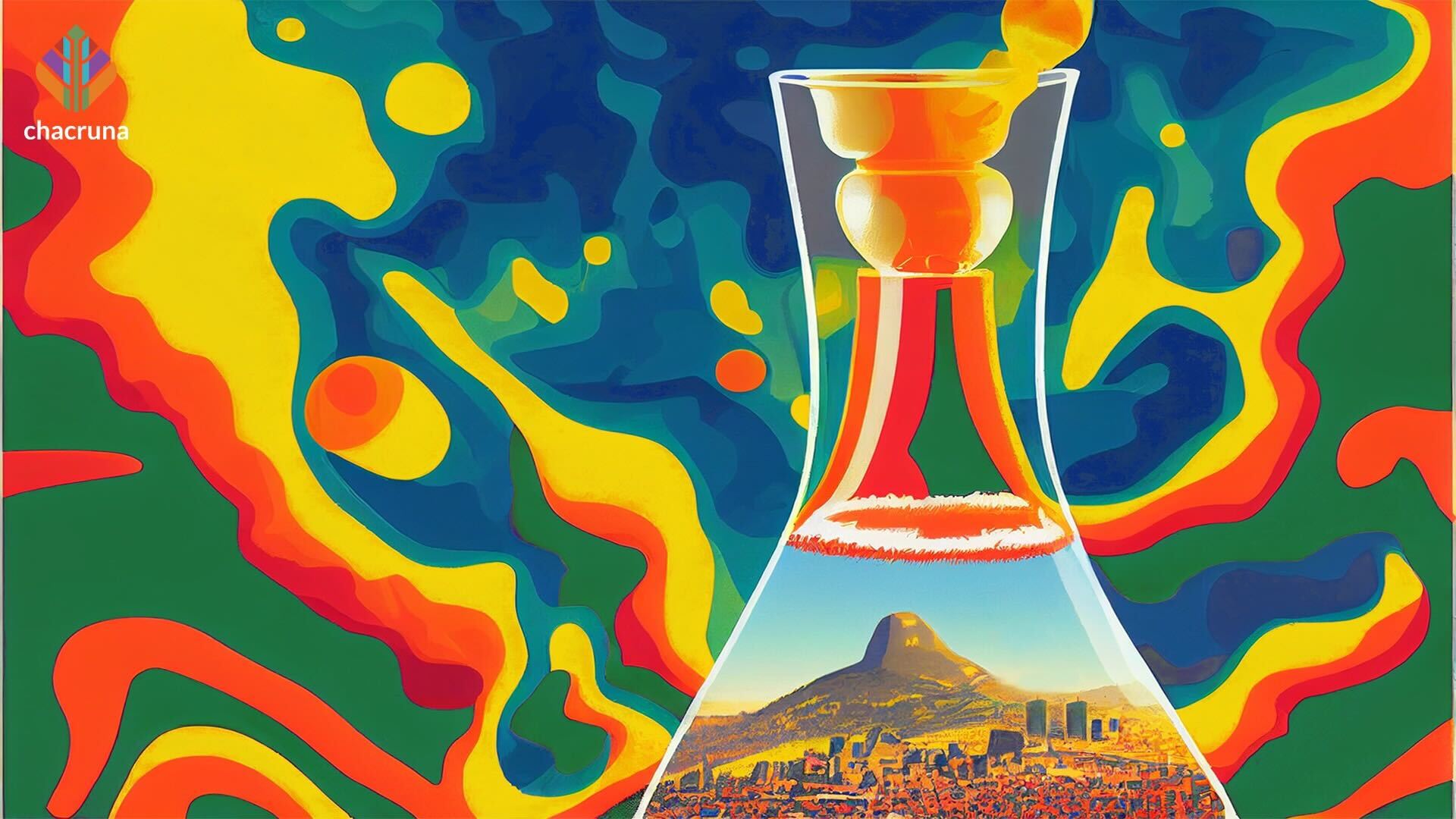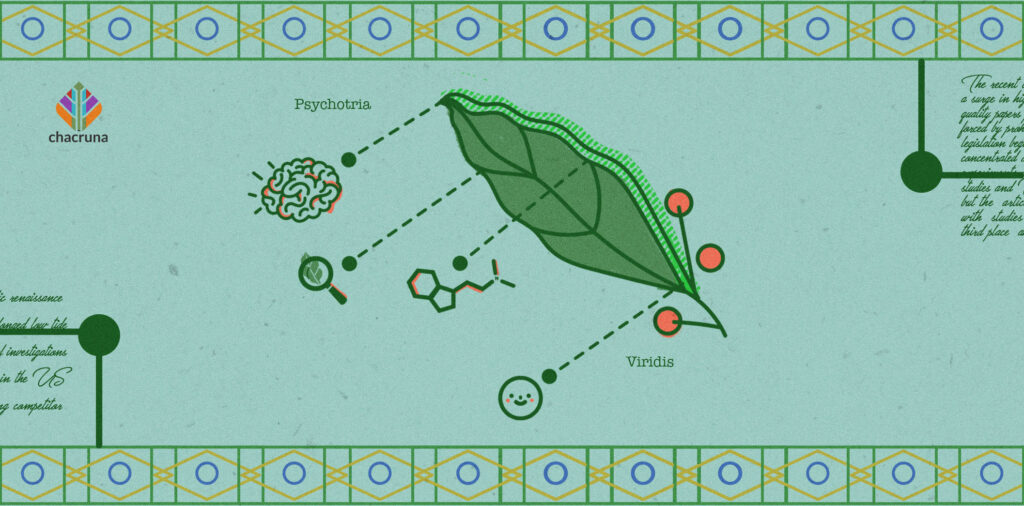- After 2024, the Scenario for Psychedelic Therapies Can Only Improve - January 16, 2025
- Symposium in Brazil Debates Psychedelics at a Political Crossroads - December 13, 2024
- Conference in Rio Defends Psychedelics in Public Health - December 11, 2024
Biomedical research in Brazil ranked third in high impact articles, but largely ignores issues raised by a long tradition of humanistic studies spurred by ayahuasca rituals.
Ayahuasca
In February 2021, an article in the Journal of Psychoactive Drugs brought to light a survey of 76 publications on classic psychedelics with the greatest total of number of citations and annual citation rate, aiming at identifying trends in the high-impact works by psychedelic scientists (Lawrence et al., 2021). Co-authored by prominent researchers in the field such as Roland Griffiths and Robin Carhart-Harris, the paper divided biomedical psychedelic literature in two cohorts, a recent one (n = 38), dominated by clinical studies with high citation rates, and an older one (n = 38) that included more basic science and preclinical studies with much lower repercussion among peers.
The recent cohort corresponds to the so-called psychedelic renaissance, a surge in high quality papers published [around the world] since 1994 or so, after a prolonged low tide forced by prohibition legislation beginning in the 1970s.
The recent cohort corresponds to the so-called psychedelic renaissance, a surge in high quality papers published since 1994 or so, after a prolonged low tide forced by prohibition legislation beginning in the 1970s. This new wave of investigations concentrated on experiments with psilocybin and were carried out mainly in the US (15 studies) and UK (13), but the 2021 article included a somewhat surprising competitor: Brazil, with 5 studies, ranked third place, ahead of Switzerland (4 papers).
The reason for Brazil’s outstanding position is ayahuasca, whose religious use has been recognized in the country beginning in 1987, then fully regulated in 2010, making it readily available for researchers once they have been authorized by Anvisa (the equivalent of the FDA). The South American nation has a long history of research with psychoactive substances; cannabis, to start with, but more recently with the ceremonial brew prepared with the leaves of chacruna shrub (Psychotria viridis) and the bark of mariri or jagube vine (Banisteriopsis caapi).
In the case of ayahuasca, this tradition goes back to the 1990s, when União do Vegetal (UDV), one of the Brazilian urban churches that use the beverage as a sacrament, started the Hoasca Project in 1991, in collaboration with Denis McKenna and Charles Grob. The initiative resulted in the publication of pioneering studies on the effects of the brew in humans, one of which compared 15 long-term ayahuasca drinkers in rituals with healthy individuals who had no experience with the beverage, and concluded that UDV members had lower levels of anxiety and noted that 11 out of 15 had rid themselves of alcohol abuse (Grob et al., 1996).
Another hoasca study led by Grob and Dartiu Xavier Silveira compared 40 adolescent ayahuasca drinkers with 40 youngsters and showed lower levels of anxiety and attention deficit in the first group (Silveira et al., 2005). For many years, Silveira has led a group of psychedelic researchers at the Federal University of São Paulo (UNIFESP), one that investigated ibogaine as well, a substance that also has a long history in Brazil (more about ibogaine ahead).
The sixth most cited paper, according to Lawrence’s 2021 survey, was a pioneering randomized trial of ayahuasca, the first in the world of a psychedelic substance for treatment-resistant depression to be controlled by a placebo group. It had been carried out at the Federal University of Rio Grande do Norte (UFRN, in the Brazilian acronym) by Fernanda Palhano-Fontes and colleagues in the Brain Institute team led by Dráulio Barros de Araújo (Palhano-Fontes et al., 2019). By then, the work had amassed an average 38 citations per year; not far from the 50.2 per year obtained by the top performers (PubMed records indicate a total of 147 citations for the paper to this day).
It was the apex in a line of enquiry with cannabinoids and ayahuasca initiated years before at the University of São Paulo’s (USP) Ribeirão Preto Medical School by José Alexandre Crippa and Jaime Hallak, with a fruitful collaboration with Jordi Riba’s group in Spain. Araújo had done research at USP before moving to UFRN, publishing with Sidarta Ribeiro in a pioneering study of brain imaging under the influence of the brew (Araújo et al., 2012).
A preliminary trial with ayahuasca for depression had also been conducted in Ribeirão Preto in 2015 (Osorio et al., 2015). Rafael Guimarães dos Santos, another member of Hallak’s team, nowadays leads a range of studies, covering depression, social anxiety, substance abuse disorder, anxiety in cancer patients, post-traumatic stress disorder (PTSD), the effects of multiple doses of ayahuasca, ayahuasca compared to ketamine, and the brew’s interaction with the brain cannabinoid system.
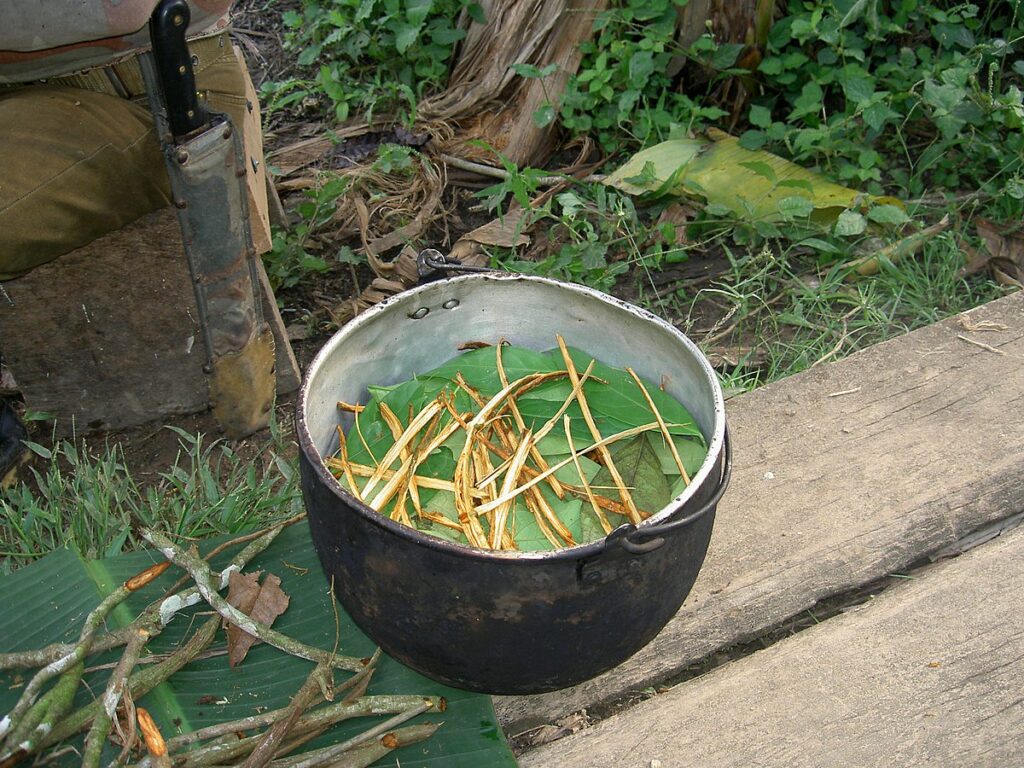
DMT
Following the controlled trial of ayahuasca for depression, Araújo devised at UFRN the Dune Project, informally known in his group as “DMT from A to Z” (DMT stands for dimethyltryptamine, a psychoactive component of ayahuasca). It involves testing pure DMT’s anti-depressive effects, in lieu of the brew itself, both in inhaled and intramuscular injection form, as a way to shorten the psychedelic journey duration. Instead of four hours tripping after ingestion of the beverage, the dosing sessions last 10 minutes and about 1 hour, respectively, which could make for a more affordable treatment for depression, in case it gets approval, because there won’t be a need to keep one or two therapists at the patient’s bedside for long hours. An initial phase with healthy volunteers inhaling DMT has been completed and indicated its safety in physiological and psychological terms, and the next phase with treatment-resistant depression patients is about to start.
Besides that, the A-to-Z project involves systematic sampling and DMT extraction from the jurema-preta tree (Mimosa tenuiflora), one of many plants containing the substance, and then analyse different concentrations of the psychedelic substance in different seasons, in the hope of finding clues as to the biological function of DMT in the plant’s metabolism. In parallel, Araújo has a partnership with UFRN’s chemistry department to start synthesizing DMT locally. (As a historical footnote, it’s worth mentioning that DMT was first isolated and identified in 1946 from M. tenuiflora under the name nigerine by Brazilian chemist Oswaldo Gonçalves de Lima in Pernambuco [Leite, 2022a].) Another branch of the Dune Project at UFRN, led by Nicole Galvão-Coelho, investigates DMT’s effects on inflammation, cortisol levels, and BDNF (brain-derived neurotrophic factor, a hormone involved in neurogenesis), with the help of animal models and also in human samples [Galvão-Coelho et al., 2020).
Lucas Oliveira Maia, also a member of Araújo’s team, is expanding research with psychedelics to the field of palliative care, in partnership with Ana Cláudia Mesquita Garcia, a nurse and professor at the Federal University of Alfenas (UNIFAL). They published a systematic review (Maia et al., 2022) on the subject and concluded from 20 selected articles (640 patients, 75% of which with cancer diagnoses) that psychedelic-assisted therapy has the potential to reduce anxiety and depression and shows few adverse effects.
USP’s Institute of Psychiatry in São Paulo, in collaboration with UNIFESP, is planning a multicenter trial to test ayahuasca for alcohol abuse. According to André Negrão, one of the leading investigators, the protocol is under analysis by the institute’s Institutional Review Board (IRB).
Another line of research investigating benefits of ayahuasca for prolonged grief disorder is being pursued at the Universidade Federal da Integração Latino-Americana (UNILA) by Francisney Nascimento and his students in the clinical neuropharmacology lab in Foz de Iguaçu. They completed a first round of six patients and are preparing for a second one with 20; this time, in a randomized, placebo-controlled trial. Nascimento’s lab is also in negotiations with a Brazilian company to organize a clinical trial with psilocybin for a non-disclosed condition in the second semester of 2023.
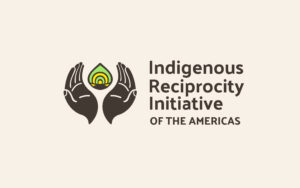
Discover the Indigenous Reciprocity Initiative of the Americas
Psilocybin
Private funding of psychedelic research is not common in Brazil, where science is almost exclusively sponsored by federal and state bodies. One exception is Scirama, a company started in 2021 by cannabis investors to enter the new field. Among the studies planned for 2023 is a trial for post-Covid depression, where psilocybin-assisted psychotherapy benefits will be compared to those of the nasal spray Spravato (esketamine) with 90 volunteers (30 in each group, plus a placebo group), led by Daniel Mograbi at the Catholic University of Rio de Janeiro (PUC-RJ). The firm is invested in developing molecules and formulations, too, such as a nasal spray of harmine (one of the alkaloids in the ayahuasca brew) for Alzheimer’s now being tested in animal models. Scirama acts as a service provider as well, commercializing an in vitro testing platform for psychedelic compounds that employs brain organoids (clusters of differentiated brain cells) to investigate their biochemical effects in the nervous system. The platform was developed by Stevens Rehen at the Federal University of Rio de Janeiro (UFRJ) and the D’Or Research Institute (IDOR) (Dakic et al., 2016), and Scirama has just licensed it to the French biotech firm AGS Therapeutics.
To complete the Brazilian ayahuasca portfolio of psychedelic research, one should mention the program to sequence the genomes of both P. viridis (chacruna) and B. caapi (mariri) put in place by Francisco Prosdocimi at UFRJ and Alessandro Varani at another São Paulo State University, UNESP, in its Jaboticabal campus. They published the DNA sequence of chacruna mitochondria and chloroplasts in October (Varani et al., 2022) and are now a few sequencing runs away from completing both nuclear genomes, which they hope will provide indications about the metabolic pathways through which the plants produce their alkaloids.
MDMA and LSD
Other psychedelic substances have been investigated in Brazil, too, but not as extensively as in the case of ayahuasca. Eduardo Schenberg, originally from UNIFESP and now at Phaneros Institute, has conducted a trial with MDMA for PTSD (three patients) (Jardim et al., 2021). At the São Paulo State University of Campinas (UNICAMP) Isabel Wiessner, Marcelo Falchi, and Luís Fernando Tófoli have published a series of articles on the cognitive effects of LSD in healthy individuals, the last of which has dealt with its impact on language (Wiessner et al., 2023). Sidarta Ribeiro, a co-author in some of these UNICAMP papers, and his students at UFRN use rats as animal models for the study of both LSD’s and 5-MeO-DMT’s effects on brain wave patterns.
On another historical note, in the 1950s and 1960s, LSD had already been investigated at USP’s Institute of Psychiatry with psychotic patients by Clóvis Martins, but the studies were discontinued after its prohibition in the 1970s. Before that, in another example, Sandoz’s Delysid had been prescribed by Brazilian psychiatrists and psychotherapists to treat alcohol abuse.
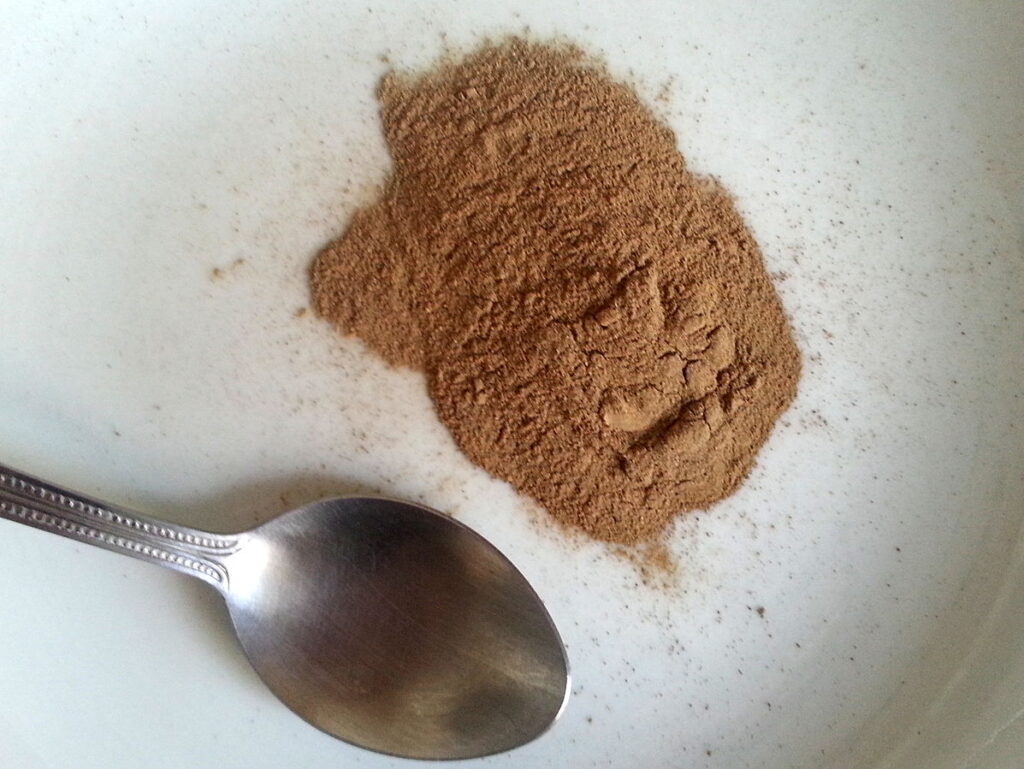
Ibogaine
Another expanded field of psychedelic clinical and research activity in Brazil targets ibogaine, the substance derived from the West African shrub Tabernanthe iboga. Although not a classic psychedelic, like mescaline, DMT, psilocybin or LSD, the compound elicits a prolonged and intense dreamlike altered state of conscience and, since the 1960s, is purported to appease withdrawal symptoms and to help addicts overcome substance use disorder (SUD). Brazilian legislation has not yet regulated nor scheduled ibogaine in the list of controlled substances, a sort of limbo that allows doctors to prescribe it and individuals to import it from countries where the compound is legally available.
As a matter of fact, a few clinics in the country already treat addicts with ibogaine, beginning in the 1990s with Bruno Rasmussen Chaves, an MD who has attended to thousands of SUD patients since then and is now a partner of Bienstar Wellness ketamine and ibogaine clinics in Latin America. With Schenberg and Silveira, Chaves published a retrospective analysis of 75 SUD patients that found 61% of them abstinent months afterwards (Schenberg et al., 2014). A placebo-controlled clinical trial with ibogaine was planned to enroll 80 cocaine and crack addicts at USP’s Institute of Psychiatry (Leite, 2021), but has been put on hold indefinitely because of difficulties in securing all the necessary doses. Additionally, a smaller ibogaine trial with 12 alcohol SUD patients has started at USP’s Ribeirão Preto Medical School by Santos’ and Hallak’s group.
Humanities
Brazil has also a distinguished tradition of anthropological, historical, and sociological research on psychedelics, mainly focused on ayahuasca use by Indigenous peoples and established religions such as Santo Daime, Barquinha, and UDV (MacRae, 1992; Labate, 2004). There is a particularly strong field of anthropological studies around other plants of power such as cannabis, coca, jurema, rapé (snuff), entheogen, and tobacco. Chacruna’s Beatriz Labate and Clancy Cavnar have organized and edited many books about ayahuasca and its diaspora across the world. Henrique Carneiro leads an active group of historians at USP in São Paulo that has originated a series of dissertations and books, such as História Social do LSD no Brasil [The social history of LSD in Brazil] (Delmanto, 2020). Religion scholars Luiz Assunção, Rodrigo Grünewald, Sandro Salles, Dilaine Sampaio, and Estêvão Palitot study the Catimbó or Jurema Sagrada religiosity in the Northeastern region of Brazil, that mixes ritual elements from Native Brazilian, African, and European origins and employs a brew prepared with the DMT-containing plant jurema-preta (Leite, 2022b).
In spite of all the academic activity around psychedelics in the country and the fact that many biomedical researchers have contributed essays and chapters to Labate’s and Cavnar’s books, it would be exaggerated to affirm that there is a vibrant intellectual exchange in Brazil between the two cultures, to borrow C. P. Snow’s expression. Recent initiatives to bridge this gap missed the chance to start a conversation as they acquired an adversarial tone that isn’t conducive to real dialogue.
A paper authored by Eduardo Schenberg and Konstantin Gerber (Schenberg & Gerber, 2022) has questioned the epistemic authority attributed to scientific studies, proposing that epistemic injustices were committed with practical, cultural, social, and legal consequences, and raised doubts about the epistemic authority based on the double-blind design, the molecularization discourse, and contextual issues about safety. The article has elicited some controversy (Labate, et al., 2022; Smith et al., 2022; Leite, 2022c); in part, because Schenberg is himself involved in a research project called Expedition Neuron, in partnership with Tomas Palenicek, from the National Institute of Mental Health in the Czech Republic.
In April 2019, they organized a trip to the Amazon rainforest to run a pilot study on the effect of ceremonial ayahuasca use by the Huni Kuin tribe, by means of collecting data on brain waves under the brew’s influence in a naturalistic set and setting. Based on this pilot expedition and mobile EEG study, they devised a plan “to pursue a larger trial for understanding the fundamental effect of ayahuasca during ritual use, with great implications for the scientific understanding of Indigenous knowledge and healing practices.” (Expedition Neuron, 2019) It is not clear for other researchers to what extent this very project abides to the high ethical standards and requirements laid out by Schenberg and Gerber in their paper about epistemic injustice.
In an ideal academic world, [biomedical and humanities scholars] would be engaged in a joint effort to overcome limitations in both fields by putting under scrutiny the very presuppositions and boundary conditions that constrain their investigations.
This is just a recent example of how segregated both ecosystems of psychedelic research can still be. Biomedical and humanities scholars have not yet started mobilizing their respective principles, arguments, and data as tools for cross-pollinating each other, so to speak. In an ideal academic world, they would be engaged in a joint effort to overcome limitations in both fields by putting under scrutiny the very presuppositions and boundary conditions that constrain their investigations.
Brazilian psychedelic researchers in the biomedical and humanities camps should join forces and take advantage of the country’s critical mass of expertise made possible by the availability of ayahuasca and its cultural and legal acceptance. It is a great opportunity to advance psychedelic knowledge beyond the narrow medicalization of plants and compounds used for millennia to further the human experience.
Art by Trey Brasher.
References
Araujo, D. B., Ribeiro, S., Cecchi, G. A., Carvalho, F. M., Sanchez, T. A., Pinto, J. P., de Martinis, B. S., Crippa, J. A., Hallak, J. E., & Santos, A. C. (2012). Seeing with the eyes shut: Neural basis of enhanced imagery following ayahuasca ingestion. Human Brain Mapping, 11, 2550–60. doi: 10.1002/hbm.21381.
Dakic, V., Maciel, R. M., Drummond, H., Nascimento, J. M., Trindade, P., & Rehen, S. K. (2016). Harmine stimulates proliferation of human neural progenitors. Peer J, 4. e2727. doi: 10.7717/peerj.2727
Delmanto, J. (2020). História social do LSD no Brasil: Os primeiros usos medicinais e o começo da repressão [Social history of LSD in Brazil: The first medicinal uses and the beginning of repression]. Elefante Editora.
Expedition Neuron: Neuroscience in the Brazilian and Peruvian Amazon. (2019). Ant Neuro. https://www.ant-neuro.com/sites/default/files/SLS-SM-0192.01rev01%20eego%20showcase%20Huni%20Kui.pdf
Galvão-Coelho, N. L., de Menezes Galvão, A. C., de Almeida, R. N., Palhano-Fontes, F., Campos Braga, I., Lobão Soares, B., Maia-de-Oliveira, J. P., Perkins, D., Sarris J., & de Araujo, D. B. (2020). Changes in inflammatory biomarkers are related to the antidepressant effects of ayahuasca. Journal of Psychopharmacology, 10, 1125–1133. doi: 10.1177/0269881120936486.
Grob, C. S., McKenna, D. J., Callaway, J. C., Brito, G. S., Neves, E. S., Oberlaender, G., Saide, O. L., Labigalini, E., Tacla, C., Miranda, C. T., Strassman, R. J., & Boone, K. B. (1996). Human psychopharmacology of hoasca, a plant hallucinogen used in ritual context in Brazil. The Journal of nervous and mental disease, 184(2), 86–94.
Jardim, A. V., Jardim, D. V., Chaves, B. R., Steglich, M., Ot’alora G., M., Mithoefer, M. C., da Silveira, D. X., Tófoli, L. F., Ribeiro, S., Matthews, R., Doblin, R., & Schenberg, E. E. (2021). 3,4-methylenedioxymethamphetamine (MDMA)-assisted psychotherapy for victims of sexual abuse with severe post-traumatic stress disorder: an open label pilot study in Brazil. Brazilian Journal of Psychiatry, 43(2). doi.org/10.1590/1516-4446-2020-0980
Labate B. C. (2004). A reinvenção do uso da ayahuasca nos centros urbanos [The reinvention of ayahuasca in urban centers]. Editora Mercado de Letras.
Labate B. C., Antunes, H., de Assis, G. L., Gomes, B., Smith, M., & Cavnar, C. (2022). On epistemic injustices, biomedical research with Indigenous people, and the legal regulation of ayahuasca in Brazil: The production of new injustices? Transcultural Psychiatry, 5, 705–710. doi: 10.1177/13634615221120869
Lawrence, D. W., Sharma, B., Griffiths, R. R., & Carhart-Harris, R. (2021). Trends in the top-cited articles on classic psychedelics. Journal of Psychoactive Drugs, 53(4), 283–298. doi: 10.1080/02791072.2021.1874573.
Leite, M. (2021). The case of Brazil: After ayahuasca, ibogaine opens up opportunity for first-class research in the global south. MAPS Bulletin, 31, 40–42.
Leite, M. (2022a, August 25). The resurrection of jurema (2) – DMT from A to Z, with a stop in Quixadá, Ceará. Chacruna. https://chacruna.net/resurrection-jurema-2/
Leite, M. (2022b, August 30). The resurrection of jurema (3) – The almost invisible religion in Brazil’s Northeast. Chacruna. https://chacruna.net/resurrection-jurema-3/
Leite, M. (2022c, March 14). Controversy over injustice against ayahuasca traditional knowledge rebounds. Chacruna. https://chacruna.net/controversies_epistemic_injustices_schenberg_gerber/
MacRae, E. (1992). Guided by the moon: Shamanism and the ritual use of ayahuasca in the Santo Daime religion in Brazil. http://www.neip.info/downloads/edward/ebook.htm
Maia, L. O., Beaussant, Y., & Garcia, A. C. M. (2022). The therapeutic potential of psychedelic-assisted therapies for symptom control in patients diagnosed with serious illness: A systematic review. Journal of Pain Symptom Management, 6, e725-e738. doi: 10.1016/j.jpainsymman.2022.01.024.
Osório, F. de L., Sanches, R. F., Macedo, L. R., Santos, R. G., Maia-de-Oliveira, J. P., Wichert-Ana, L., Araujo, D. B., Riba, J., Crippa, J. A., & Hallak, J. E. (2015). Antidepressant effects of a single dose of ayahuasca in patients with recurrent depression: A preliminary report. Brazilian Journal of Psychiatry, 37(1), 13–20. doi: 10.1590/1516-4446-2014-1496.
Palhano-Fontes, F., Barreto, D., Onias, H., Andrade, K. C., Novaes, M. M., Pessoa, J. A., Mota-Rolim, S. A., Osório, F. L., Sanches, R., Dos Santos, R. G., Tófoli, L. F., de Oliveira Silveira, G., Yonamine, M., Riba, J., Santos, F. R., Silva-Junior, A. A., Alchieri, J. C., Galvão-Coelho, N. L., Lobão-Soares… & Araújo, D. B. (2019). Rapid antidepressant effects of the psychedelic ayahuasca in treatment-resistant depression: a randomized placebo-controlled trial. Psychological Medicine, 49(4), 655–663. doi: 10.1017/S0033291718001356.
Schenberg, E. E., de Castro Comis, M. A., Chaves, B. R., & da Silveira, D. X. (2014). Treating drug dependence with the aid of ibogaine: A retrospective study. Journal of Psychopharmacology, 11, 993–1000. doi: 10.1177/0269881114552713.
Schenberg, E. E., & Gerber, K. (2022). Overcoming epistemic injustices in the biomedical study of ayahuasca: Towards ethical and sustainable regulation. Transcultural Psychiatry, 5, 610–624. doi: 10.1177/13634615211062962.
Da Silveira, D. X., Grob, C. S., de Rios, M. D., Lopez, E., Alonso, L. K., Tacla, C., & Doering-Silveira, E. (2005). Ayahuasca in adolescence: a preliminary psychiatric assessment. Journal of psychoactive drugs, 37(2), 129–133. https://doi.org/10.1080/02791072.2005.10399792
Smith, M., Labate, B. C., Antunes, H., Assis G. L., Gomes, B., & Cavnar, C. (2022). Access and benefit-sharing legislation: An ethnobiological approach to overcoming epistemic injustices through intercultural dialogue.Transcultural Psychiatry, 5, 711–713. doi: 10.1177/13634615221123609
Varani, A. M., Silva, S. R., Lopes, S., Barbosa, J. B. F., Oliveira, D., Corrêa, M. A., Moraes, A. P., Miranda, V. F. O., & Prosdocimi, F. (2022). The complete organellar genomes of the entheogenic plant Psychotria viridis (Rubiaceae), a main component of the ayahuasca brew. PeerJ, 10, e14114. doi: 10.7717/peerj.14114.
Wiessner, I., Falchi, M., Daldegan-Bueno, D., Palhano-Fontes, F., Olivieri, R., Feilding A., Araujo, D., Ribeiro, S., Bezerra Mota, N., & Tófoli, L. F. (2023). LSD and language: Decreased structural connectivity, increased semantic similarity, changed vocabulary in healthy individuals. European Neuropsychopharmacology, 68, 89–104. doi: 10.1016/j.euroneuro.2022.12.013.
Take a minute to browse our stock:
Did you enjoy reading this article?
Please support Chacruna's work by donating to us. We are an independent organization and we offer free education and advocacy for psychedelic plant medicines. We are a team of dedicated volunteers!
Can you help Chacruna advance cultural understanding around these substances?


